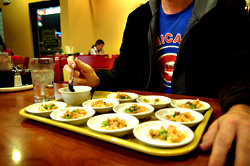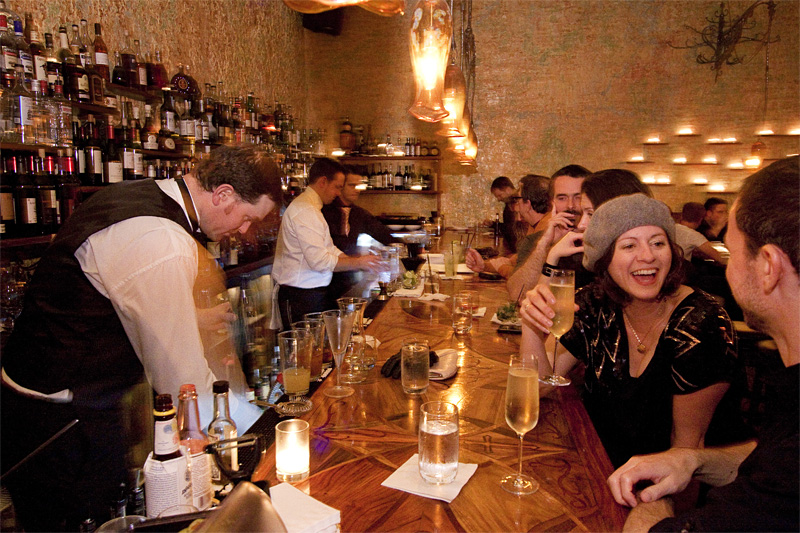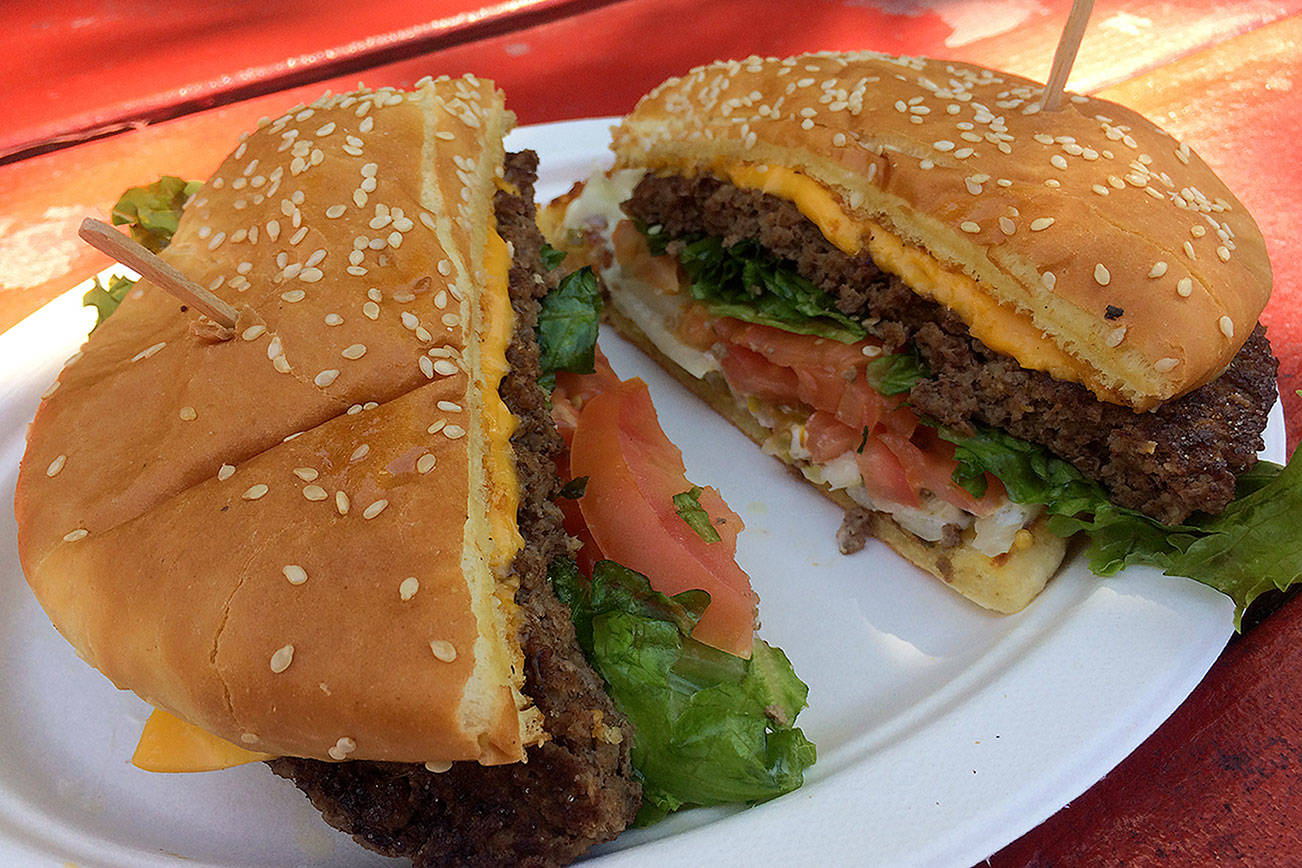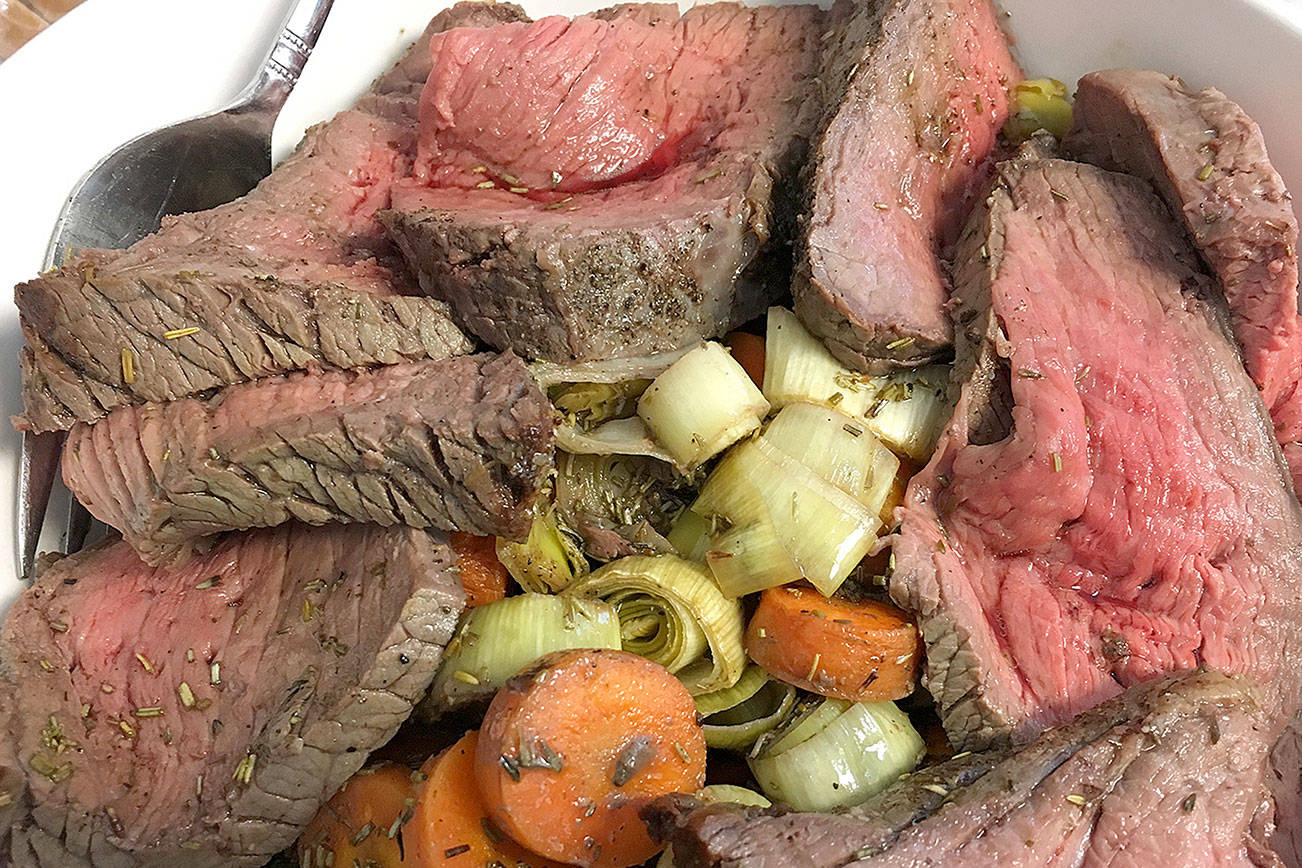Adam Nguyen has made a success of his Cafe Pho, on Third Avenue and Marion Street, by smartly altering traditional Vietnamese recipes to appeal to a multiethnic downtown lunch crowd. But when Nguyen decided to open a second restaurant specializing in the dishes of his home turf, the central Vietnamese city of Hue, he sought out a space in a two-story strip mall on Martin Luther King Jr. Way. Huong Giang opened this November, and if you can navigate a barely paved maze of traffic barrels and bulldozers, you’ll be able to reach it.
He’s not the only budding restaurateur to brave the construction. A number of ambitious Vietnamese establishments—including nearby Salima—have opened in the middle of the light-rail construction.
What makes MLK Way attractive to restaurateurs, despite the current chaos, is all the existing Vietnamese markets, delis, and other businesses drawing customers to the strip, including two minimalls at Myrtle and Graham. What makes Huong Giang and Salima attractive to diners of all stripes—flat tire be damned—is that they’ve distinguished themselves from their competitors by serving less-common Vietnamese cuisines.
Between the familiar listings for pho, cold noodles (bun), and rice plates on Huong Giang’s short menu, for instance, you’ll spy Hue-style dishes that Adam swears you won’t see elsewhere—all courtesy of his mother, Nuon, the house chef.
The most delightful is item No. 1, the banh beo chen. These rice-flour cakes, steamed in tiny plates, come 10 to an order, filling the plate like an instant tea party. Each smooth, gelatinous cake is topped with sweet ground shrimp, crispy squares of pork belly, and sautéed green onions. Before spooning them into your mouth, you add a teaspoon of chile-spiked fish sauce, which flushes out their delicate flavors. Another Huong Giang specialty, cha tom: thick slices of a spongy steamed shrimp cake whose mild, almost patélike flavor made me recall the steamed pork loaf I ate all over Hanoi.
Not all the Hue-style dishes appealed as strongly. The spicy broth for Huong Giang’s other house specialty, bun bo hue, a soup with spaghetti-style rice noodles and everything from fish balls to cubes of blood, was too thin to carry the pool of chili oil floating on top of it. But the Nguyens’ pho was positively elegant, with fatty, soft pieces of flank steak and a clear broth that seduced with the sweetness of caramelized onions and anise. Bowls of bun were as they should be, the wriggly vermicelli noodles complemented by juicy, just-grilled meats and the perfumed crunch of fresh herbs. A simple rice plate—a mound of rice papered over with ground shrimp and steamed pork slices and served with pickled green papaya—epitomized Nuon Nguyen’s gift for clean, deceptively simple food.
At Huong Giang, Adam Nguyen has replicated, on a more modest scale, Cafe Pho’s attractive, pop-y decor, with poured-concrete floors, walls the colors of butter and ripe tomatoes, and wood tables set with red-framed wooden chairs. If only the view were better.
The same sensory dissonancemarked my meals at Salima, across the road and several blocks north of Huong Giang. Inside: ash-blond walls, high swagged curtains, sparkly chandeliers. Outside: heavy construction.
The solution was to keep my eyes on the table. Asari and Salima Mohamath are Cham, a minority ethnic group scattered around Vietnam, Cambodia, and Malaysia. The Cham are predominantly Muslim, and their restaurant is halal, the Muslim equivalent of kosher. Muslims from many backgrounds make up a good portion of the clientele.
Some of the Cham dishes, such as the egg rolls, substituted chicken and shrimp for the pork you find in classic Vietnamese fare. Others expressed a more distinctly pungent character: A whole fish, slashed on the diagonal and deep-fried until the outside turned oak-colored and crunchy, was accompanied by a tamarind-fish sauce that jangled unfamiliar taste buds—the culinary equivalent of an orange-and-green-striped shirt. Fried chicken (not battered, so the meat got tough) came with a more straightforwardly pungent, amber-colored fish sauce with shallots, tomatoes, and roasted chiles. My love for fish sauce grows every year, and I was soon avoiding the chicken and spooning the potent stuff directly over rice, while my companion, less accustomed to Malaysian food, avoided it altogether.
The richer, more elaborately seasoned Malaysian dishes that dominate the menu will appeal to everyone. Salima learned about Malaysian cuisine from a brother-in-law who runs a Malaysian restaurant; she mastered her recipes as a consulate cook in Vietnam.
Her curries range from the sucker punch of the beef lemak—its brothy coconut-milk base all sweet and mild until you’re thwakked with the chiles—to the long, slow buzz of the lamb curry, whose thick brown gravy almost approaches the depth and spice of a good Oaxacan mole. Green beans fried with belachan—dried-shrimp paste, chiles, and garlic—were neither as forbidding nor as funky as their description sounds, and the chicken satay with rice cubes and chunky, broadly seasoned peanut sauce bears little relation to the pallid, lemon-yellow chicken tenders and sugary peanut butter Americans think “satay” is. Most addictive of all was a Malaysian street food called roti canai: a wheat dough that is stretched, oiled, rolled, and rerolled, then popped in the pan, emerging a deep-fried croissant that you gingerly tease apart and sop in a coriander-heavy curry sauce.
Though their restaurants are clearly struggling, the Mohamaths and the Nguyens are forging on, buoyed by the faith that their gamble will eventually pay off. It takes a different kind of faith to weave down treacherous MLK in search of Huong Giang and Salima. But having tasted what you’ll find, I can promise your faith will be rewarded.






